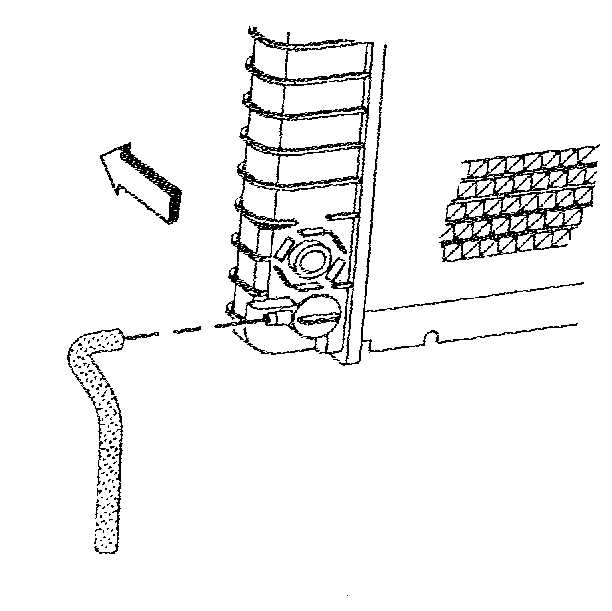For 1990-2009 cars only
Draining Procedure
- Place a drain pan under the radiator drain cock.
- Place the end of the tube in the drain pan.
- After the engine cools down, remove the radiator cap.
- Completely open the radiator drain cock.
- Allow the coolant to drain from the system until the flow stops.
- Place a drain pan under the block drain hole plug.
- Remove the drain hole plug from the engine block.
- Allow the coolant to drain from the block until the flow stops. There may be more drainage from the radiator at this time.
- Install the block drain hole plug.
- Close the radiator drain cock.

Filling Procedure
- Check to make sure that the radiator drain cock is closed.
- Check to make sure that the block drain hole plug is tight.
- Premix a 50/50 solution of antifreeze and clear, preferably distilled water. If you use the old coolant, make sure the solution is clean and clear, and that the solution is a 50/50 mixture of glycol and water.
- Place a large top funnel in the radiator filler neck or surge tank.
- Slowly pour in the coolant. Because the thermostat is closed, filling the cooling system may be slow.
- After you fill the cooling system to 13 mm (0.5 inches) below the radiator filler neck (Gas Engines) or to the full mark on the surge tank (Diesel Engines), start the engine and let the cooling system warm up. When the thermostat opens, the coolant level may drop. If the level drops, add coolant as necessary.
- Install the radiator or surge tank cap.
- Check the coolant level in the coolant recovery reservoir (Gas Engines) or the surge tank (Diesel Engines). Add coolant as necessary.
Notice: When adding coolant, use DEX-COOL® coolant. If silicated coolant is added to the system, premature engine, heater core or radiator corrosion may result. In addition, the engine coolant will require change sooner-at 50 000 km (30,000 mi) or 24 months.
